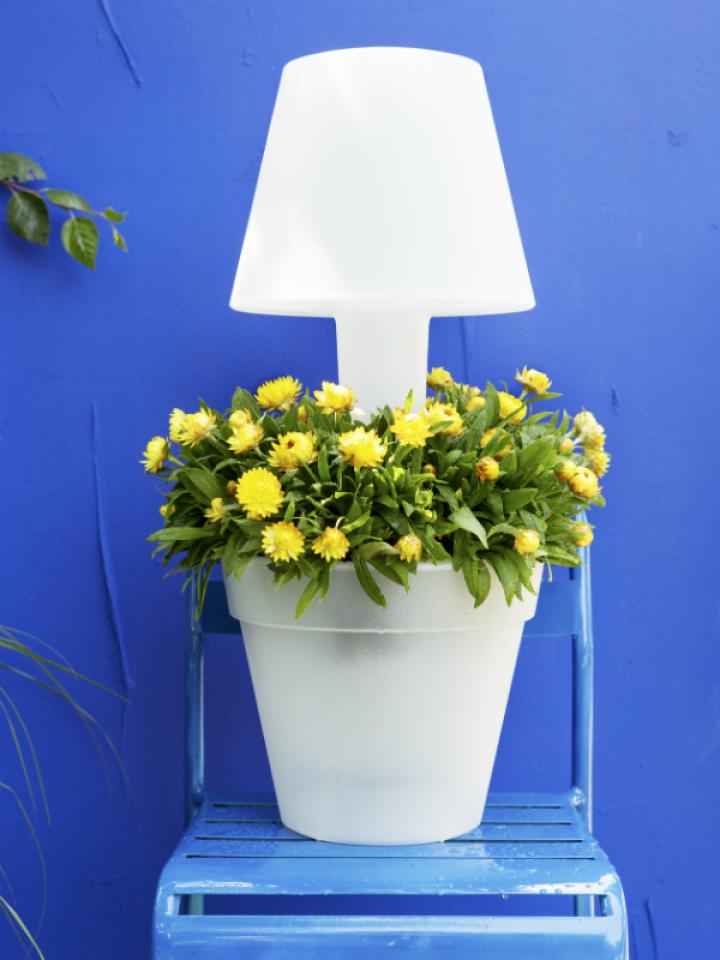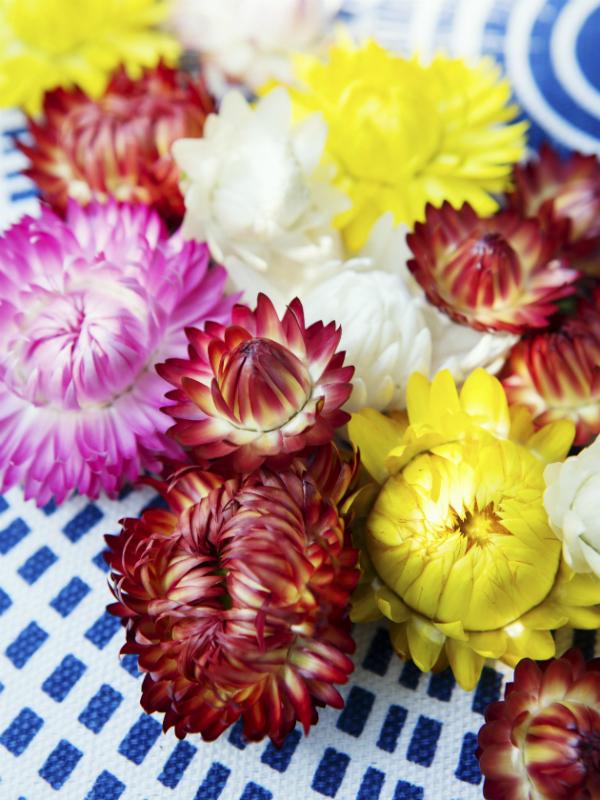The flowers of strawflower (Xerochrysum bracteatum) rustle like paper, even when they’re completely fresh and fruity. It’s an attractive, easy to maintain plant with lanceolate, pointy leaves and full, rich flowers in pink, red, yellow, purple, white and orange. The strawflower is a somewhat herbaceous beauty from the Aster family which does well in borders and beds, but can also enhance containers and pots thanks to its compact size. Depending on the variety, the plant will be between 25 and 50cm tall.
Strong survivor
The strawflower is native to Australia, where the plant can survive almost anywhere, up to and including desert soil. The only thing it can’t cope with is frost. The species from which the garden plant is descended was created in around 1850 in Germany from cuttings from Australia. The plant blooms most lavishly from June to September, and continues flowering until the first night frost. Bonus: the bright colours attract butterflies, bees and birds.
Attractive dried flower
The strawflower is a popular and stylish dried flower. In order to dry them, cut the flowers when they are half open and hang them upside down in a dry, well-ventilated, dark place. The flowers will continue to open up of their own accord during the drying process.
Strawflower trivia
-
The strawflower is one of the biological treasures gathered by Napoleon’s wife Joséphine de Beauharnais in her famous garden at Château de Malmaison.
-
The Latin name bracteatum is derived from 'bractea' and refers to the bracts which are often mistakenly thought to be petals. The actual flowers are tiny and are in the heart.






